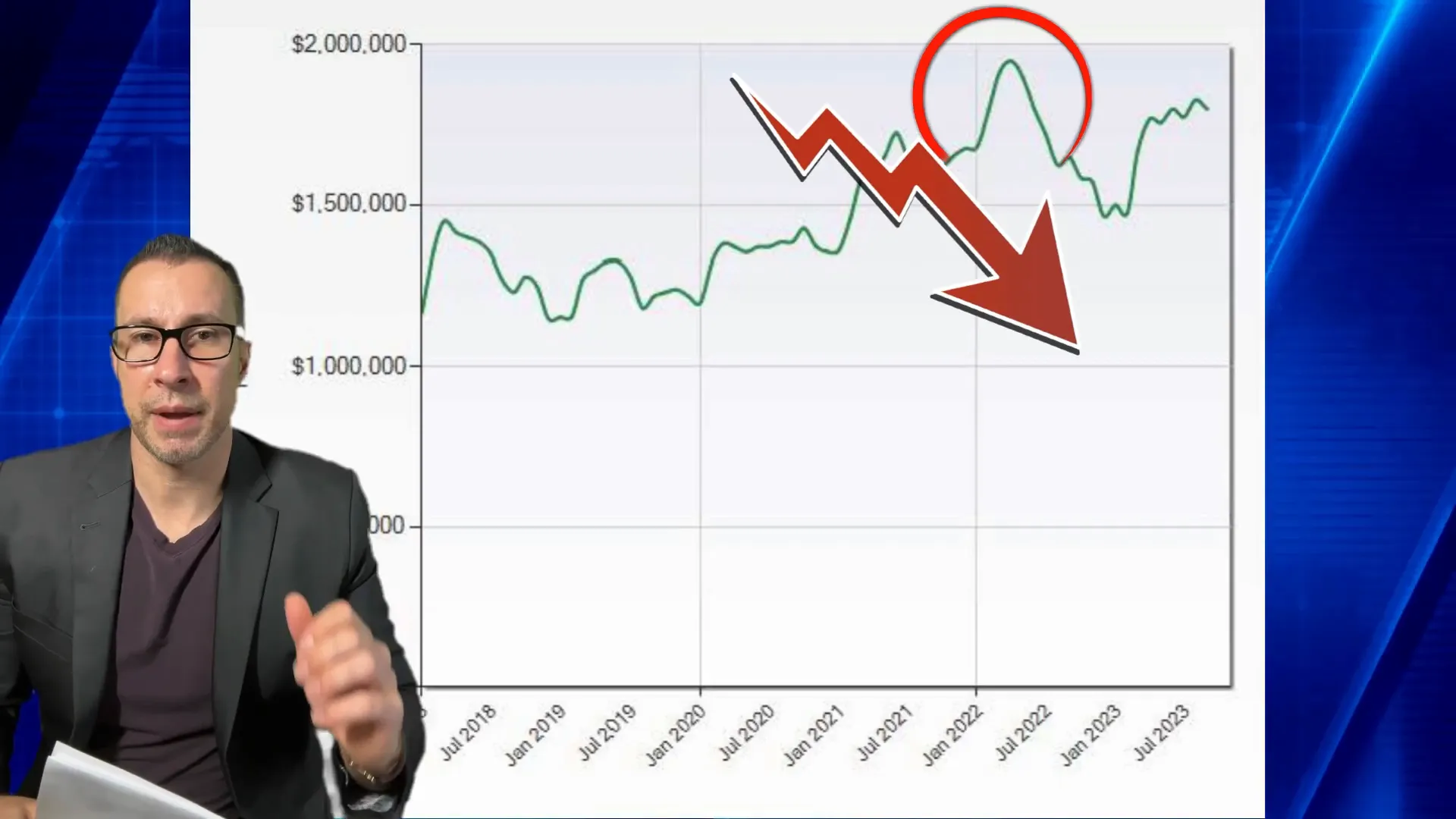Real Estate Market Update: Key Trends in Santa Clara County
Real Estate Market Update: Key Trends in Santa Clara County
In this Real Estate Market Update, we delve into the latest trends affecting Santa Clara County's housing market. From price fluctuations to inventory challenges, we uncover what homeowners and potential buyers need to know.
🔍 Overview of the Real Estate Market
The real estate market is in a state of flux, influenced by various economic factors. Interest rates have seen significant changes, impacting buyer behavior and market dynamics. Understanding these shifts is crucial for both homeowners and buyers.
Currently, the market is experiencing a recovery phase after a noticeable downturn. Prices have begun to stabilize, but regional differences are evident. Keeping an eye on local trends is essential for making informed decisions.
Key Factors Influencing the Market
- Interest Rates: Fluctuations in interest rates play a pivotal role in buyer affordability.
- Inventory Levels: The number of available homes is critically low, affecting market competition.
- Economic Trends: Broader economic conditions impact buyer confidence and spending power.
📈 Santa Clara County Market Trends
In Santa Clara County, real estate trends reveal a complex landscape. After hitting a peak, prices have adjusted due to rising interest rates. However, the market has shown resilience, with signs of stabilization.
Homeowners are grappling with the implications of these trends. It’s essential to stay informed about local market conditions to navigate this environment effectively.

Current Pricing Dynamics
Recent statistics indicate that while some areas are experiencing price declines, others are witnessing an uptick. This disparity highlights the importance of understanding micro-market conditions.
🏠 San Jose Housing Prices
San Jose is a prime example of fluctuating real estate prices. Following a peak, the market has rebounded significantly. Home prices are nearly back to their previous highs, showcasing the area's desirability.
Despite this recovery, certain neighborhoods are experiencing different pricing trends. Homebuyers should be aware of these variances to make educated purchasing decisions.

Neighborhood Comparisons
When comparing neighborhoods, San Jose presents a mixed bag. While some areas are thriving, others face challenges with price stability. It’s crucial to analyze specific neighborhoods rather than generalize across the city.
- Central San Jose: Prices have seen a slight decline, indicating potential buyer hesitance.
- Cambrian: Contrarily, this area has seen price increases, reflecting strong demand.
🔍 Micro-Market Analysis: Central San Jose vs. Cambrian
The contrast between Central San Jose and Cambrian is striking. Central San Jose has experienced price dips, while Cambrian has enjoyed price growth. This divergence raises questions about the underlying factors driving these trends.

Factors Influencing Price Variances
- Location: Proximity to amenities and schools can significantly impact desirability.
- Market Demand: Cambrian’s appeal has led to increased buyer interest, pushing prices higher.
- Property Types: The types of homes available can also affect pricing dynamics.
📉 Understanding the Price Variances
Understanding why certain areas are experiencing price variances is key for potential buyers. The factors influencing these changes can be complex but are essential to grasp.
In Central San Jose, the slight decline in prices could be attributed to over-saturation or buyer fatigue. Meanwhile, Cambrian's growth suggests a robust demand that continues to attract buyers.

Implications for Buyers
For buyers, recognizing these variances can lead to strategic decisions. It’s advisable to conduct thorough research and consider the long-term potential of neighborhoods.
Investing in a growing area like Cambrian could yield better returns compared to more stagnant markets. Make informed choices based on current trends and forecasts.
📊 August Inventory Levels
August marked a crucial month for inventory levels, which hit one of the lowest points in recent history. This scarcity is a significant factor influencing the real estate market across the board.

Impact of Low Inventory
Low inventory levels create a competitive environment for buyers. With fewer homes available, bidding wars are becoming more common, driving prices up in desirable areas.
Potential buyers must be prepared to act quickly and strategically. Understanding the implications of low inventory can help in navigating this challenging market.
Future Outlook
Looking ahead, it seems unlikely that inventory levels will significantly increase. The combination of low interest rates and a reluctance to sell among current homeowners contributes to this trend.
As the market stabilizes, buyers should remain vigilant and proactive. Staying informed about inventory changes and market dynamics will be essential for success.
🔮 Future Inventory Predictions
Looking ahead, the inventory situation in Santa Clara County seems poised to remain tight. Various factors contribute to this prediction, including current homeowner sentiment and economic conditions.
Many homeowners who secured low interest rates during the pandemic are reluctant to sell. They prefer to stay in their homes rather than face higher borrowing costs. This phenomenon is likely to continue, exerting pressure on the housing supply.

Factors Influencing Future Inventory
- Homeowner Reluctance: With attractive interest rates locked in, many homeowners are choosing to stay put.
- Market Conditions: Economic uncertainty may deter potential sellers from listing their homes.
- New Construction: Limited new construction projects may not significantly alleviate the inventory crunch.
🦠 Impact of COVID-19 on the Market
The COVID-19 pandemic has left an indelible mark on the real estate market. Changes in buyer behavior and market dynamics are still being felt today.
During the pandemic, interest rates dropped to historic lows, prompting many to enter the market. However, as the economy recovers, the effects of those low rates are still influencing homeowner decisions.

Long-Term Changes in Buyer Behavior
- Remote Work: The rise of remote work has altered buyer preferences, with more people seeking larger homes and suburban locations.
- Investment Mindset: Many buyers view real estate as a stable investment during uncertain times, increasing demand.
- Market Caution: Buyers are more cautious, taking their time to make informed decisions due to market volatility.
💰 Current Interest Rates and Homeowner Behavior
Current interest rates are a critical factor influencing homeowner behavior. With rates remaining relatively high compared to the lows seen during the pandemic, many homeowners are hesitant to make a move.
Potential sellers are weighing the costs of new mortgages against their current favorable rates. This dynamic creates a unique challenge for the market.

Homeowner Sentiment
- Staying Put: Many homeowners are opting to remain in their homes to retain their low-interest rates.
- Market Uncertainty: The fear of market fluctuations discourages many from selling.
- Refinancing Trends: Some homeowners are refinancing to take advantage of rates without selling their homes.
📣 Conclusion and Call to Action
In summary, the Santa Clara County real estate market is navigating a complex landscape influenced by various factors. From low inventory to changing homeowner behavior, understanding these dynamics is crucial.
For homeowners and potential buyers, staying informed is key. If you want personalized insights into your specific market or have questions about buying or selling, don't hesitate to reach out!
❓ FAQs About the Real Estate Market
What is driving the current low inventory levels?
Current low inventory levels are primarily driven by homeowners' reluctance to sell, especially those with low interest rates from previous years.
How will interest rates affect home prices?
Higher interest rates generally reduce affordability, which can pressure home prices downward. However, local market conditions significantly influence outcomes.
What trends should buyers be aware of?
Buyers should focus on micro-markets, as trends can vary greatly within neighborhoods. Understanding local dynamics is critical for making informed purchasing decisions.
Is now a good time to buy a home?
While the market presents challenges, opportunities exist. Buyers should evaluate their financial situation and long-term goals before deciding.
Categories
- All Blogs (314)
- Client Testimonials (19)
- East Palo Alto (81)
- Graeham Watts Home Tours (23)
- Home Buyer's Process (34)
- Home Tours (28)
- Houses for sale in East Palo Alto (13)
- Investing (18)
- Landlord and Tenant Info (9)
- Menlo Park (49)
- Personal (5)
- Real Estate Questions Answered (91)
- Real Estate Tips (86)
- Redwood City (85)
- San Mateo County (10)
- Seller's Process (22)
Recent Posts










GET MORE INFORMATION

